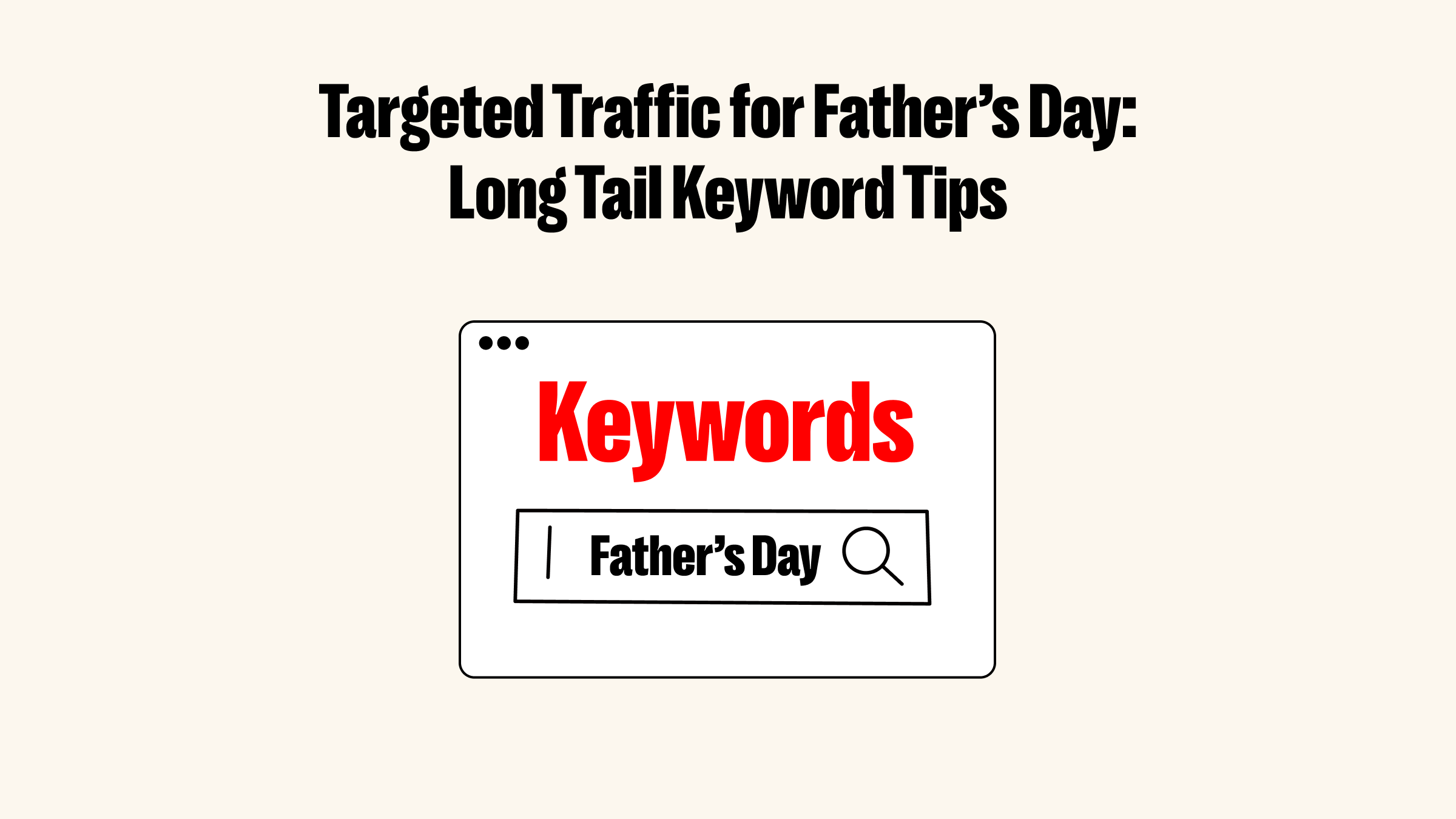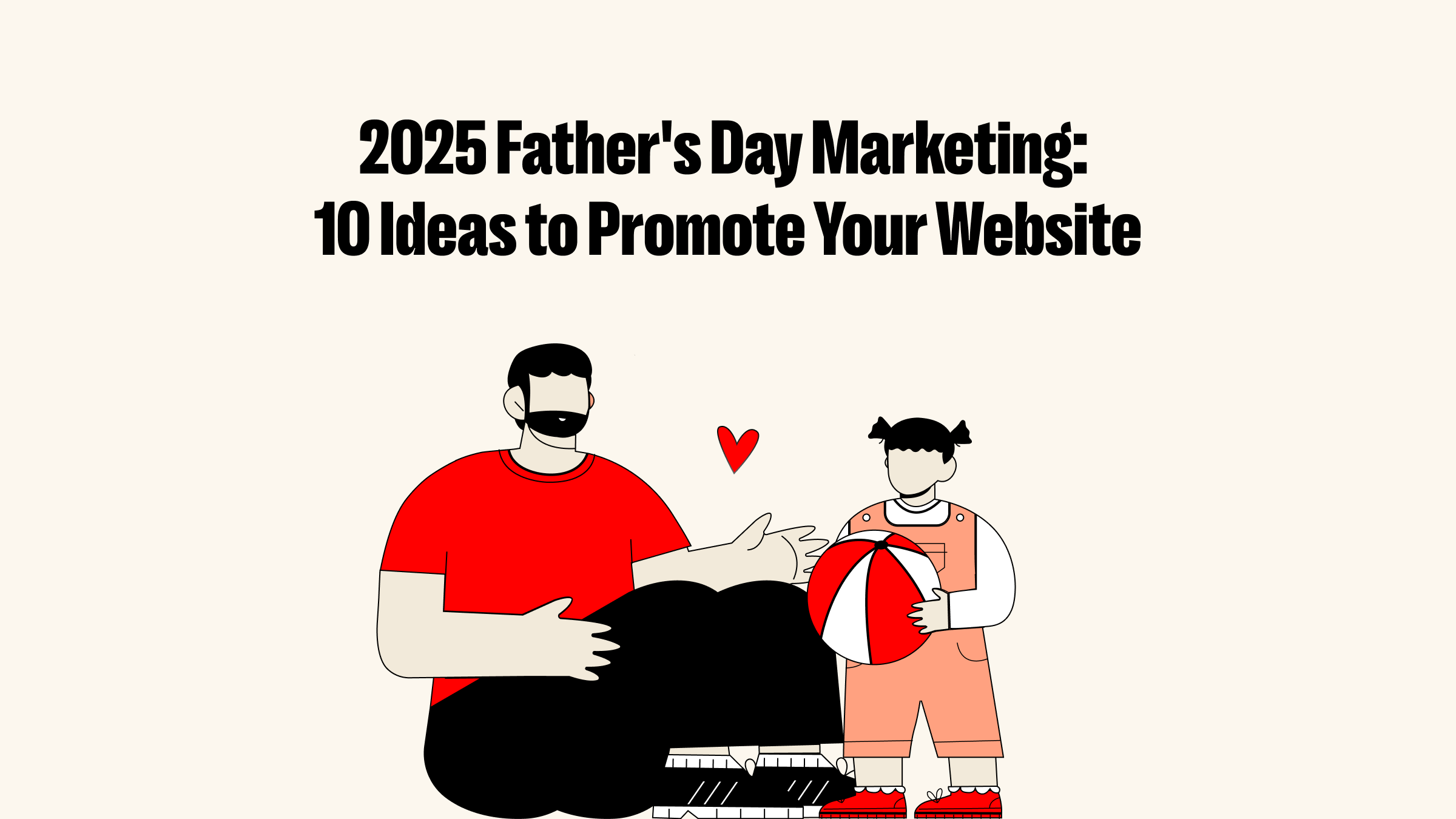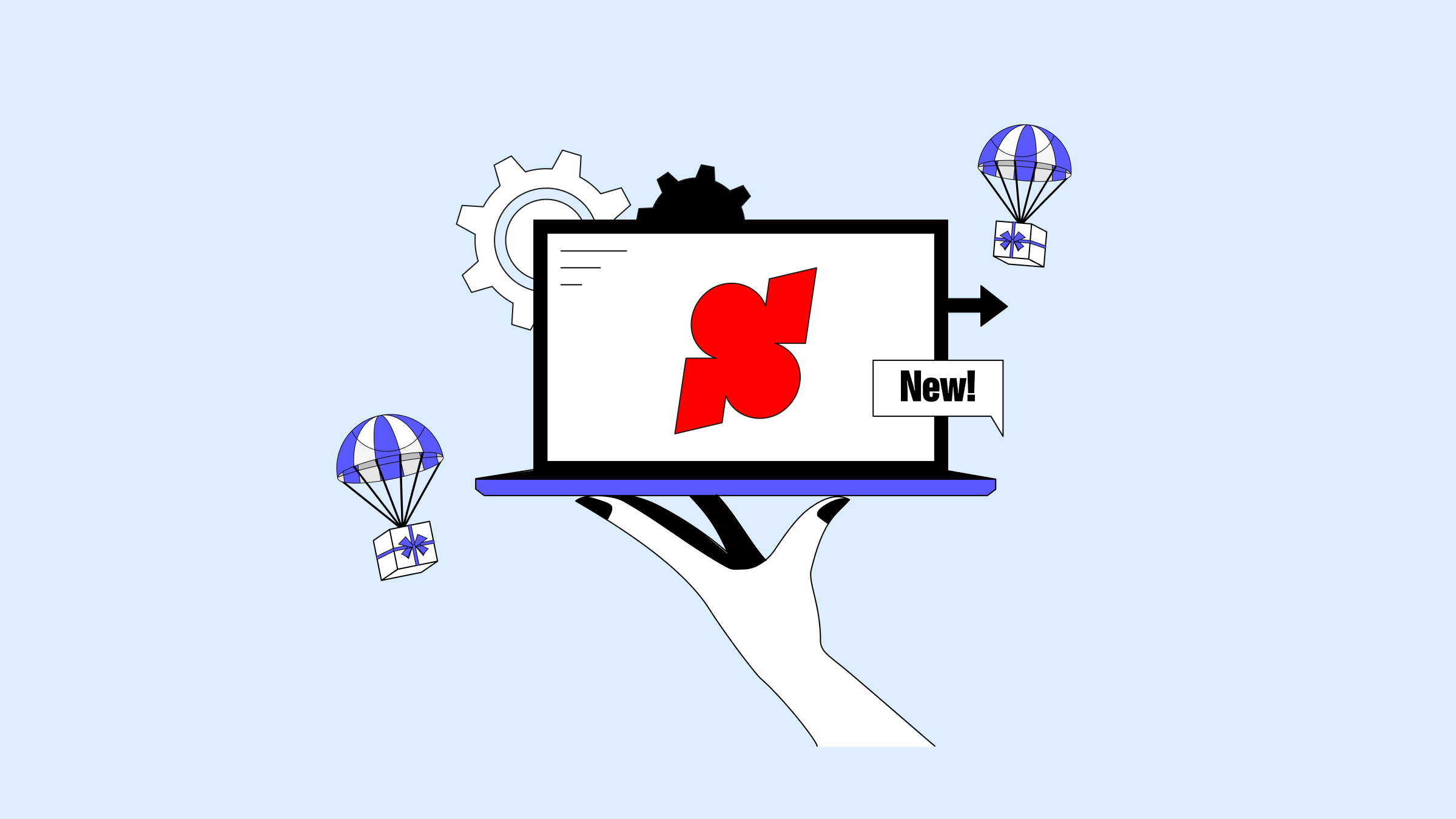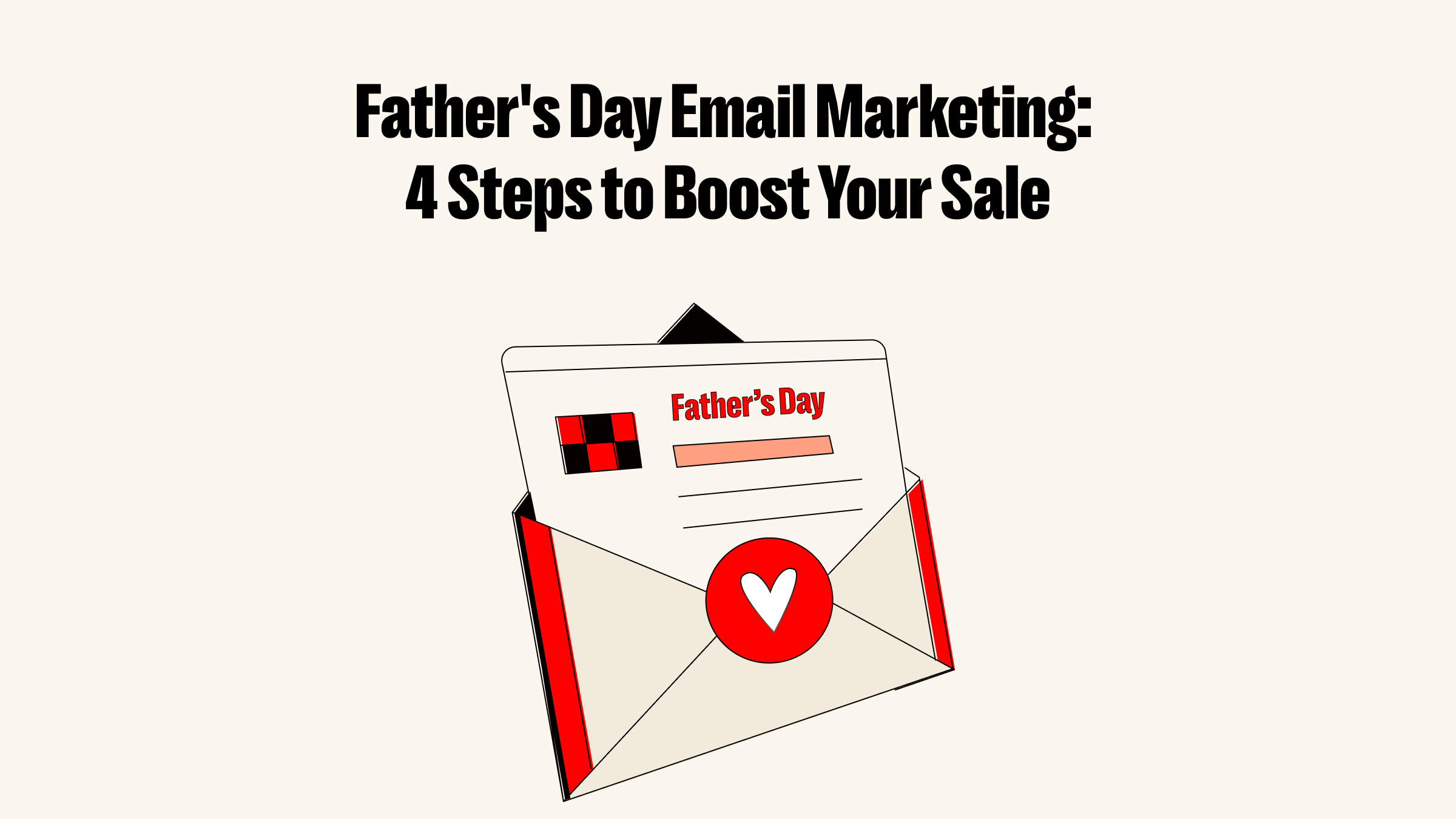
Between managing ad spend and updating product listings, seasonal moments can quietly become big opportunities. Father’s Day is one of those moments—it calls for a message that feels personal, not pushy. With the right approach, Father’s Day email marketing can build connection and boost engagement without feeling salesy. This blog will walk you through simple, thoughtful strategies to make your emails feel more human—and help your store stand out in a crowded inbox.
What is email marketing and why is it important?

Email marketing is basically sending messages directly to your customers' inboxes—whether it's a product update, a holiday offer, or just a quick hello. It’s personal, it’s direct, and when done right, it doesn’t feel like spam—it feels like a conversation.
And here’s why more and more online stores are turning to it as a key part of their strategy:
?? Highly targeted: Unlike mass mail blasts, email marketing in your own customer space (often called "owned channels") can be tailored based on user behavior and interests. That means you can speak directly to different groups instead of sending the same thing to everyone—and that leads to better results.
?? Low cost: Compared to running social ads or paying for search placements, email marketing can be super budget-friendly. You set up templates and automated flows through your store backend or email platform, and from there, the cost of sending more emails is next to nothing. It is great for testing and tweaking without burning your ad budget.
?? Easy to reuse: Once you’ve built a solid email template, you don’t need to start from scratch each time. Just swap in the right holiday theme—Father’s Day, Mother’s Day, Christmas, Mid-Autumn—and you’re good to go. That means less stress and more consistency in your seasonal campaigns.
?? Deep reach: Email gives you full creative freedom. You’re not limited by social platform rules or ad formats, so you can tell your product story in your own voice, add emotional touches, and guide readers to take action—all in one place. The result? A more lasting impression.
4 Steps to launching Father's Day email marketing
To capture attention and conversions during Father’s Day, brands need more than a catchy subject line. It’s about methodical strategy—smart segmentation, spot-on recommendations, irresistible offers, and precisely timed delivery. Let's see how to do it.
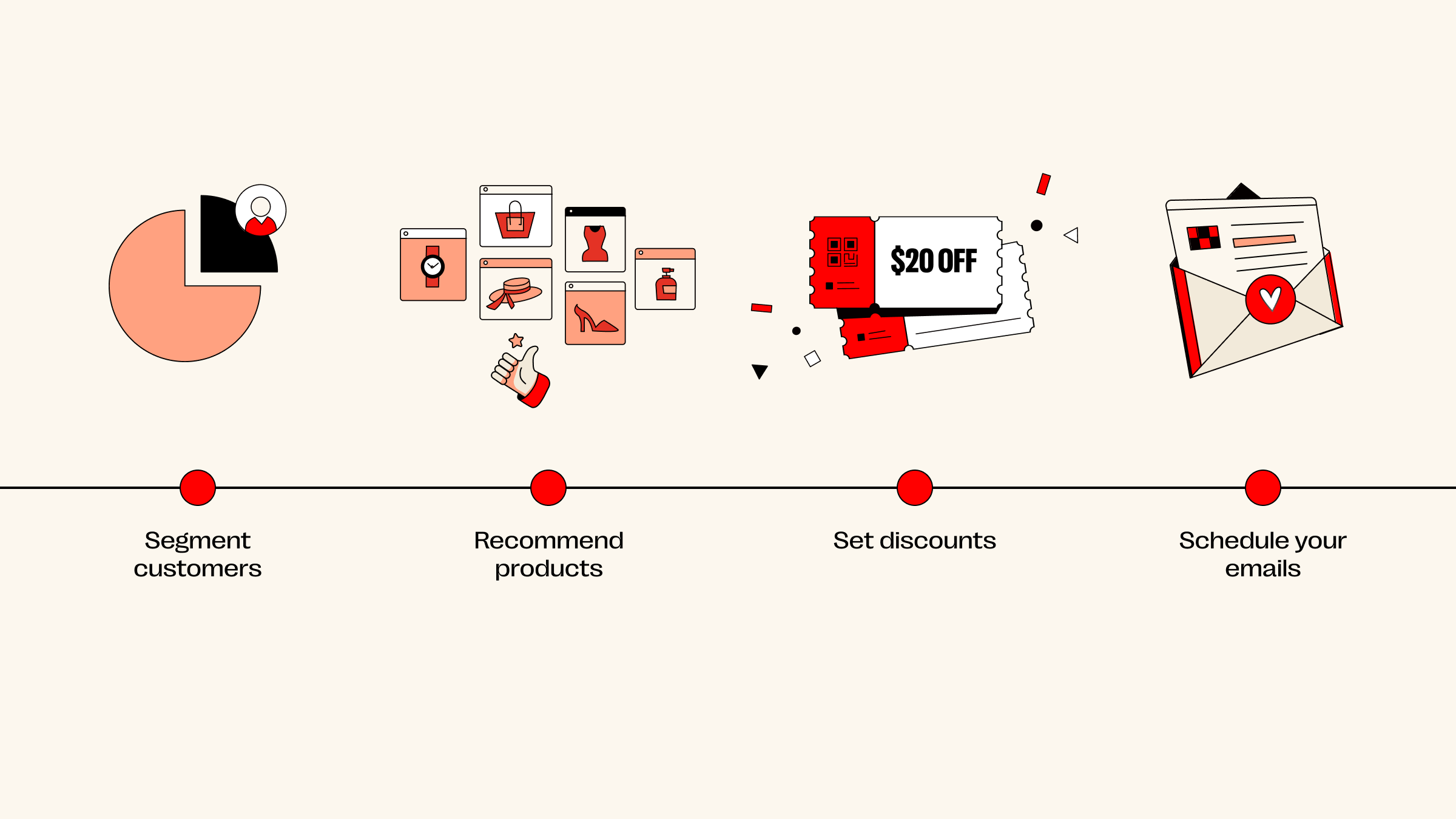
Segment customers
Not every customer shops for the same reason—and their needs, habits, and motivations can be wildly different. If you want your email marketing to actually convert, customer segmentation is where it all starts. Think of it like laying a foundation: the stronger it is, the smoother everything runs afterward.
The golden rule? You can use both lifecycle stage and behavioral data to guide your segmentation.
Segment by customer lifecycle
You can dividen customers based on where they are in their journey with your brand:
? High-potential customers: These are your brand’s champions. They’ve either bought recently, spent a lot, or shop often. Some may be new but already show strong buying power. You can tag them as "VVIP", "high frequency", or similar—they’re your most valuable group.
?? Inactive customers: These folks placed an order, signed up for emails, or joined an event—but haven’t interacted in over three months. Re-engaging them can unlock hidden growth and reduce reliance on acquiring new leads.
?? New customers: Fresh to your store and still getting to know you. Treat them gently. You can use friendly, welcoming email content to build trust and lower the barrier to their first conversion.
?? Pro tip: If you’ve collected WhatsApp contacts from customers, try sending out a quick “Father’s Day gift survey.” It can help you understand who they’re buying for, their preferred styles, and budgets. Plus, it gives you data to refine future recommendations.
Tag by behavioral data
Beyond lifecycle, you may use browsing and purchase behavior to create meaningful tags. Platforms like Shoplazza help you collect data on what customers view, buy, or subscribe to—so you can personalize your messages. For example, for your male-focused collections, tags could include:
| Category | Tag Type | Details |
| Basic Profile | Age | 26–35, 36–45, 46–55 |
| Gender | Mostly female (buying for spouse/father), some male (self-purchase) | |
| Country/region | U.S., Canada, U.K., Australia, New Zealand, etc. | |
| Purchase Behavior | Purchase Frequency | Moderate frequency (mostly before holidays) |
| Cost | Medium to high (value quality and emotional significance) | |
| Product Categories | Men’s T-shirts, polos, gift boxes, accessories (belts, wallets, watches), outdoor gear, home goods | |
| Interest & Preference | Style | American casual, minimalist, vintage, outdoor/sporty |
| Color | Navy, gray, army green, black, khaki | |
| Trend | Custom prints (e.g., “Best Dad Ever”), retro graphics, classic stripes, leather details |
?? Not sure how to start tagging? Please check out customer management tips from Shoplazza’s partner Omnisend—they walk you through building an effective tagging system from scratch.
Recommend products
Once you've segmented your customers, the next step is product recommendation—done with precision, not guesswork. Instead of sending mass emails hoping something sticks, your messages should feel like they were crafted by a personal shopper. Each product should match your customer's taste, timing, and Father’s Day vibe perfectly. Here are some product recommendation ideas based on different types of online stores:
| Store Type | Customer Behavior | Recommended Products |
| Skincare | Purchased a razor | Shaving foam, replacement blades, beard care oil |
| Men’s Apparel | Browsed/Bought shirts | Premium polo shirts, belt sets, Father’s Day gift sets |
| Home Appliances | Bought a massager | Neck massage pillow, multifunction foot spa, wellness bundle |
| Digital Accessories | Purchased a smartwatch | Leather straps, charging docks, custom storage pouches |
| Sports & Outdoors | Frequently browsed fitness products | Workout gloves, massage guns, portable outdoor tool kits |
| Home Essentials | Searched “Father’s Day” / “men’s products” | Senior massage chairs, lumbar support cushions, reading lamps |
?? Things to Watch Out For:
-
Avoid recommending what they’ve already bought. Repeating past purchases can feel lazy—unless it’s a consumable like shaving foam or socks. In those cases, frame it as a “restock” or “l(fā)imited-time refill” offer to make it relevant.
-
Make sure items are in stock. Holiday campaigns can drive quick traffic spikes. If a recommended product sells out, it’s a fast track to customer frustration. You may stick with SKUs that are stable and ready to ship.
-
Focus on product bundles. A single item might not seal the deal. Thoughtfully paired bundles—with gift-ready packaging and helpful suggestions—make clicking “Buy Now” way easier for the customer.
Set discounts
Once you've picked the right products, the final push to win over your customer is the discount strategy. The point of a discount isn’t to be cheap—it’s to make your customer feel like they’re getting a great deal. That means you should tailor offers by customer tier, so every discount feels just right: generous enough to delight, but controlled enough to protect your brand margin.
Here’s a quick reference for setting discounts based on different customer groups:
| Customer Tier | Discount Strategy | Example Description |
| High-Value Customers | Exclusive VVIP discounts, high-value full discount | Get $100 off orders over $500, VVIP vouchers, limited festival gift boxes |
| Active Customers | Select product discounts, bundle deals | 20% off men’s grooming kits, free custom card |
| New Customers | First-purchase discount, welcome gift set, trial-size offers | Sign up and get a ¥30 voucher for special section, valid for 72 hours |
| Dormant Customers | Strong discount, limited-time reminders, bestseller highlights | Father’s Day comeback offer: 25% off + free shipping, valid for 3 days only |
The prep work’s not over yet. You’ll also want to pick the right products to discount.
Don’t just throw discounts at random. Instead, you may think about what your customers will actually care about. Let’s say you run a men’s grooming site. A razor by itself? Kind of boring. But bundle it with aftershave and a solid face wash as a limited-edition gift set? Now you’ve got something that feels thoughtful and worth grabbing. How about selling men’s clothing? You can highlight classic shirts or easy-to-wear tees.
At the same time, you should skip anything with razor-thin margins or tight stock. If the item’s going to sell out fast or make you lose money, it’s not worth the risk, no matter how tempting it is to include. Got something new or not moving? You may add it in with a small discount. It’s a smart way to test demand and quietly clear space for new arrivals.
?? Things to Watch Out For:
-
Don’t hurt your brand image. You should avoid frequent or aggressive discounting, especially if you’re a high-perceived-value brand. Terms like “exclusive offer” instead of “big sale” may maintain your brand tone.
-
Be clear with discount terms. Your email should clearly state the discount details—min. spend, eligible items, validity period—to prevent confusion or support complaints.
-
Limit the discount scope. If your site sells both men’s and women’s products, consider restricting the discount code to a “Father’s Day” or “Men’s section” only. This avoids overuse and protects your profit margins.
Schedule your emails
You’ve set the discounts, picked the products—now it’s time to hit send. Around 80% of your email’s success depends on when it lands in your customer’s inbox. But what is the best time to send marketing emails? Here's the scoop.
Since Father’s Day in 2025 falls on Sunday, June 15, a great time to kick off or sprint your email campaign is the previous week. That gives shoppers the weekend to browse, plan, and purchase.
Studies released by Optinmonster show that emails generally perform best on weekdays between 9 a.m. and 11 a.m. That’s when most people are settled into their day and more likely to check and act on new messages. There’s also a second chance to catch attention in the early afternoon (1–2 p.m.) or early evening (around 5–6 p.m.)—especially for personal email accounts. For B2C ecommerce, you can try to reach your customers during evening hours or even weekends, when they’re relaxing and more likely to engage with personal content.
? Quick tip: You should check your store’s past performance to see when your emails usually get opened and clicked. Then, run A/B tests to fine-tune your schedule and make sure you’re hitting that “just right” timing.
Also, less is more—but not too little. Too many emails can land you in the spam folder. Too few? You’ll miss key moments. A balanced rhythm works best: 2 to 3 emails total in the 1–2 weeks leading up to the holiday is ideal:
-
One to build excitement
-
One as a reminder
-
One for the final push
If you're selling customized gifts like engraved mugs or personalized apparel, you may send the first email even earlier—2–3 weeks in advance—and clearly state the last day to order for on-time delivery. This helps avoid last-minute stress and keeps expectations crystal clear.
How to write a good email marketing?
At its core, a great marketing email isn’t just about promoting a product. It’s about making your customers feel something. That emotional connection is what turns casual readers into loyal buyers. Here’s where a little emotional storytelling goes a long way. One popular strategy in EDM content writing is the “3-Sense Formula”:
-
Sense of nostalgia – Tap into heartfelt memories (e.g., childhood moments with Dad)
-
Sense of belonging – Make the message feel personal and one-to-one
-
Sense of urgency – Give a gentle nudge to take action before time runs out
You don’t need to hit all three every time. You can blend them, or zoom in on just one, depending on who you’re writing to and what kind of reaction you want to spark. The better you understand your customers, the more natural this will feel.
Here’s how to build an emotionally-driven email, step-by-step:
-
The email title should hook the heart and clarify the purpose. Is this a discount? A gift set? A limited-time deal? Let people know right away. For example, “He Gave You Everything—Now Give Back | 72-Hour Father’s Day Deal”
-
That little line beneath the subject? It’s your second chance to get noticed. You may write like, “Celebrate the man who always showed up—with a gift he’ll never forget.”
-
Move into the main message and introduce your Father’s Day gifts, explain what makes them special, highlight the discount or deadline, and keep the tone warm and personal.
-
End with a CTA that’s emotionally charged—not robotic. You may motivate like, “Gift Him a Lifetime of Memories →”

Want to boost trust and conversion even more? You may try working in real numbers that build credibility. For instance, you can mention past success or current momentum to create subtle FOMO (Fear of Missing Out).
Example, “Over 1,000 customers have already added custom engravings—join them before the discount disappears!”
These little touches help make your email feel less like a sales pitch and more like a heartfelt nudge from someone who gets it.
3 Email marketing tools to enhance your campagin
To take your Father’s Day marketing messages to the next level, content alone isn’t enough. The right tool in place is essential for running streamlined, personalized, and effective campaigns.
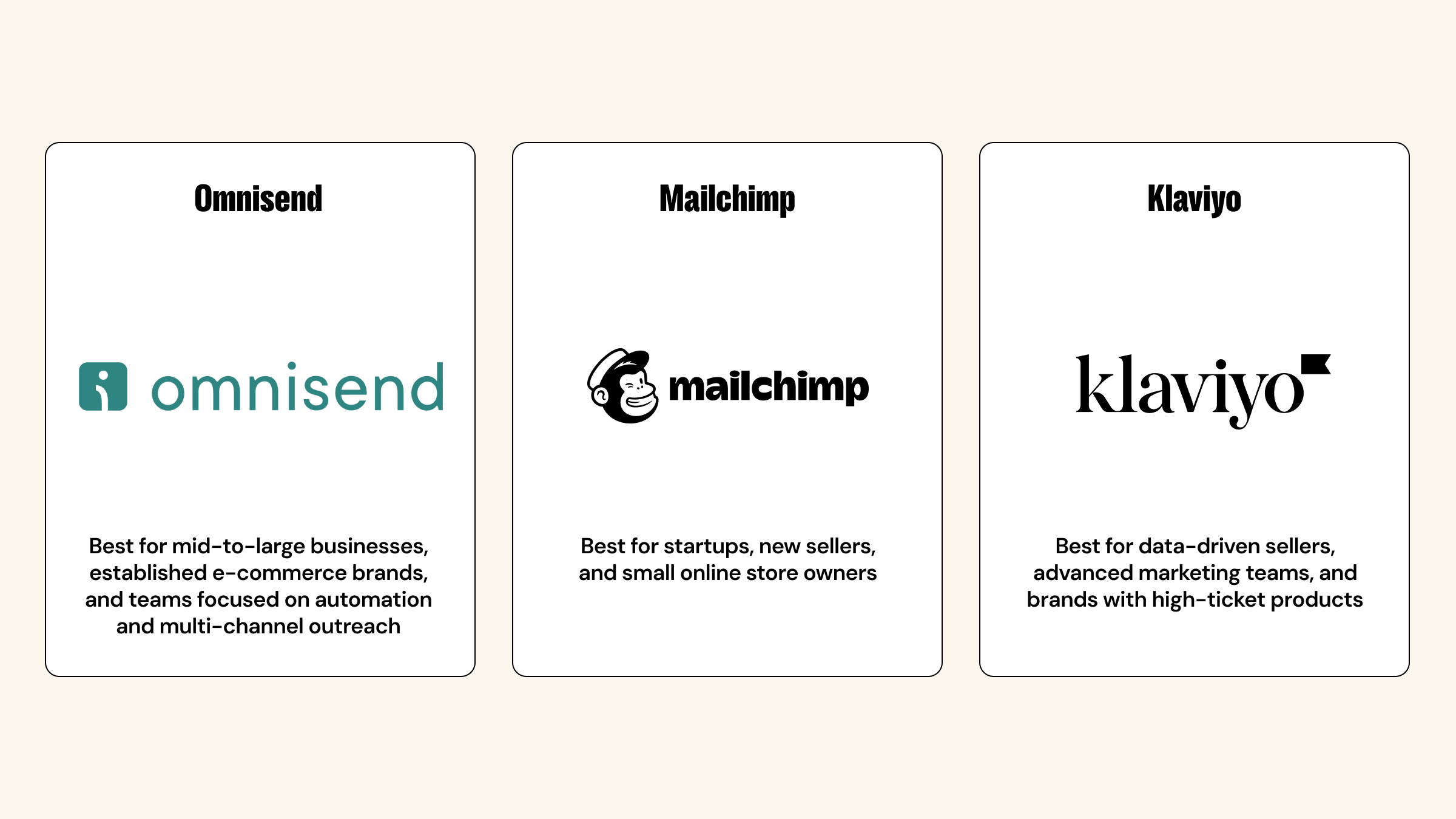
Omnisend
?? Best for: Mid-to-large businesses, established e-commerce brands, and teams focused on automation and multi-channel outreach
Omnisend excels at full-cycle automation with cross-channel coordination. From abandoned cart recovery to new product launches, you can easily set up workflows that reach users via email, SMS, and web push notifications—ensuring they see your message multiple times across different platforms. It also integrates seamlessly with Facebook and Google Ads for smarter customer segmentation and higher ROI, making it a great choice for performance-driven teams.
Mailchimp
?? Best for: Startups, new sellers, and small online store owners
Mailchimp is a well-rounded tool with strong integration capabilities and beginner-friendly features. It uses customer location and browsing behavior to deliver personalized recommendations and includes built-in generative AI tools to help you write polished emails fast. With competitive pricing, robust analytics, and automation tools, it’s an ideal pick for small businesses aiming to scale up their email marketing efforts with ease.
Klaviyo
?? Best for: Data-driven sellers, advanced marketing teams, and brands with high-ticket products
Klaviyo offers deep customer insights—beyond just open and click rates, you can track every customer’s interaction across your email flows. You can set up complex conditional logic, such as only sending follow-up emails based on whether the recipient opened or clicked the previous message. With built-in AI writing tools and automated SMS capabilities, Klaviyo makes personalized communication both scalable and efficient.
Conclusion
A simple message, a well-timed reminder, or a heartfelt subject line can go a long way. Thoughtful Father’s Day email marketing doesn’t need to be loud—it just needs to feel real. Let your emails show a little care this season.
